bauxite to alumina process

-
The Transformation of Bauxite to Aluminum (and the ...
In 2015, the US Geological Survey estimated that over 95% of bauxite was converted to alumina, with the remainder going toward a variety of products such as abrasives, chemicals, proppants, and more. The primary approach to transforming bauxite ore to alumina is known as the Bayer Process. The Bayer Process
Read More
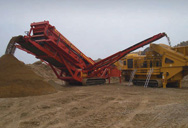
-
Bauxite mining and alumina refining: process description ...
Objective: To describe bauxite mining and alumina refining processes and to outline the relevant physical, chemical, biological, ergonomic, and psychosocial health risks. Methods: Review article. Results: The most important risks relate to noise, ergonomics, trauma, and caustic soda splashes of the skin/eyes. Other risks of note relate to fatigue, heat, and solar ultraviolet and for some ...
Read More

-
Mining and Refining – Process - World Aluminium
The Bayer Process is the most economic means of obtaining alumina from bauxite. Other processes for obtaining alumina from metal ores are also in use in some refineries, particularly in China and Russia, although these make up a relatively small percentage of global production. The process
Read More
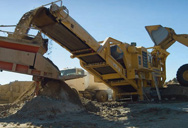
-
4 Beneficiation Processes to Obtain Aluminum from Bauxite ...
2020-7-29 By raising the temperature and pressure, the alumina in the bauxite reacts with sodium hydroxide to produce soluble sodium aluminate. Alumina in bauxite can react with high-cincentration NaOH Precipitation of aluminum hydroxide. The hot solution enters the cooling device, and is diluted with water and gradually cooled.
Read More
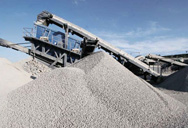
-
Mining and Refining – Process - World Aluminium
Henri Sainte-Claire Deville renames it as “bauxite” 1854: Sainte-Claire Deville discovers a method to separate kilogram amounts of aluminium from its oxide, alumina: 1886: Charles Martin Hall and Paul Héroult independently develop a process for making aluminium from alumina: 1887: Karl Josef Bayer patents his process for extracting alumina ...
Read More
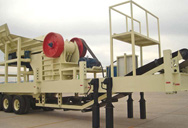
-
Bayer Process: Manufacturing Of Alumina Making of Alumina
The Bayer Process: Alumina is the main components of bauxite, so bauxite is refined in order to produce Alumina. The Bayer process is the principal way for producing alumina by refining Bauxite. Bauxite other than with 30-60percentage of aluminium oxide contains mixture of silica, iron oxides and titanium dioxide.
Read More

-
Alumina Refining The Aluminum Association
2021-5-23 Alumina is produced from bauxite, an ore that is mined from topsoil in various tropical and subtropical regions. The Bayer process, discovered in 1887, is the primary process by which alumina is extracted from bauxite. To produce pure aluminum, alumina is
Read More

-
Bauxite Extraction Process — WORLDVEST PARTNERS
2019-2-20 Bauxite is the principal ore of alumina (Al2O3), which is used to produce aluminum. Bauxite is one of the most abundant elements on earth and contains nearly 25-30% of alumina. Its typically found near the equator in tropical and subtropical regions, in the
Read More
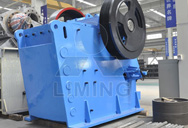
-
Alcoa to trial new alumina process that uses renewables ...
2021-5-21 By burning the coal at relatively low cost and heating water to high temperature it powers turbines and then produces the high pressure steam which is used in the process. Low pressure steam is useless as it doesn't provide the heating power. Through the process, steam is lost at a lower pressure (which is not useful).
Read More
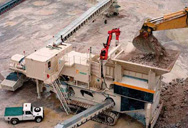
-
Extraction Process of Aluminium from Bauxite Ore
2016-4-11 Alumina Extraction Problem. In the standard Bayer Process for refining bauxite to produce alumina, the dissolution of the alumina in the ore to form sodium aluminate is accomplished in autoclaves under high pressures varying from 70 to 200 pounds per square inch. However, some lateritic bauxite ores are readily soluble in caustic, making it ...
Read More
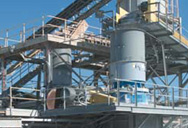
-
Bauxite and Alumina - USGS
2021-2-4 In 2020, the reported quantity of bauxite consumed was estimated to be 4 million tons, slightly more than that reported in 2019, with an estimated value of about $110 million. About 79% of the bauxite was refined by the Bayer process for alumina or aluminum hydroxide, and the remainder went to
Read More
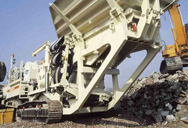
-
Bauxite Mining and Alumina Refining: Process Description ...
2021-4-30 The bauxite ore, Bayer process materials before precipitation, mud residue, and sand residue are therefore of radiological interest, whereas the alumina product is not. 8 Positional and personal monitoring data from bauxite mines and alumina refineries in Western Australia have been used to assess the above-background annual doses for the ...
Read More

-
Bayer Process: Manufacturing Of Alumina Making of Alumina
The Bayer Process: Alumina is the main components of bauxite, so bauxite is refined in order to produce Alumina. The Bayer process is the principal way for producing alumina by refining Bauxite. Bauxite other than with 30-60percentage of aluminium oxide contains mixture of silica, iron oxides and titanium dioxide.
Read More

-
Alumina: Filtration in the alumina production process
The production of alumina from bauxite is a vital first step in the production of aluminum. Filtration and separation equipment plays a significant role in this process, in particularly ...
Read More
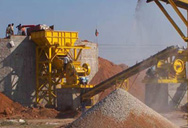
-
Bauxite Extraction Process — WORLDVEST PARTNERS
2019-2-20 Bauxite Mining Processing - Bauxite is the principal ore of alumina (Al2O3), which is used to produce aluminum. Bauxite is one of the most abundant elements on earth and contains nearly 25-30% of alumina. Its typically found near the equator in tropical and subtropical regions, in the form of horizo
Read More
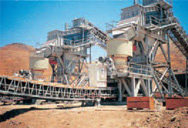
-
Alumina Refining The Aluminum Association
2021-5-23 The Bayer process is used to produce alumina The Bayer process, invented in 1887, is the primary process by which alumina is extracted from bauxite ore. This process is still used to produce nearly all of the world’s alumina supply. Aluminum oxide has many names Aluminum oxide is typically referred to as alumina, but may also be called ...
Read More
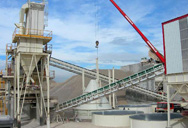
-
A REVIEW OF THE BAUXITE RESIDUE SINTER-LEACH
The Bayer process is the principal industrial means of refining bauxite to alumina. In the Bayer process, alumina is extracted from bauxite into alkaline solution (NaOH) at elevated temperatures. After extraction, the remaining solids (bauxite residue (BR)) are separated, chemically neutralised and
Read More
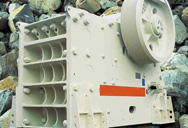
-
Bauxite/Clay/Alumina – Alpha Thermal Process
Bauxite/Clay/Alumina Bauxite forms a vast majority of the mineral markets and is shipped directly to consuming plants as mined or minimally pre-processed. This is true for bauxite from Jamaica and elsewhere including the US where they are shipped far distances for conversion into various products, most of which employ the rotary kiln.
Read More
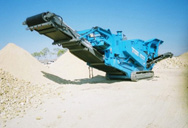
-
Alcoa to trial new alumina process that uses renewables ...
2021-5-21 “Using lower carbon alumina in the smelting process will reduce the overall carbon footprint of the metal, too, when considering the indirect and direct emissions across bauxite mining, alumina ...
Read More

-
Bauxite and Alumina - USGS
2021-2-4 In 2020, the reported quantity of bauxite consumed was estimated to be 4 million tons, slightly more than that reported in 2019, with an estimated value of about $110 million. About 79% of the bauxite was refined by the Bayer process for alumina or aluminum hydroxide, and the remainder went to
Read More

-
30 BAUXITE AND ALUMINA - USGS
2020-2-7 more than that reported in 2018, with an estimated value of about $162 million. About 73% of the bauxite was refined by the Bayer process for alumina or aluminum hydroxide, and the remainder went to products such as abrasives, cement, chemicals, proppants, refractories, and as a slag adjuster in steel mills. Two domestic Bayer-process
Read More

-
Bauxite Mining and Alumina Refining: Process Description ...
2021-4-30 The bauxite ore, Bayer process materials before precipitation, mud residue, and sand residue are therefore of radiological interest, whereas the alumina product is not. 8 Positional and personal monitoring data from bauxite mines and alumina refineries in Western Australia have been used to assess the above-background annual doses for the ...
Read More

-
Bayer Process: Manufacturing Of Alumina Making of Alumina
The Bayer Process: Alumina is the main components of bauxite, so bauxite is refined in order to produce Alumina. The Bayer process is the principal way for producing alumina by refining Bauxite. Bauxite other than with 30-60percentage of aluminium oxide contains mixture of silica, iron oxides and titanium dioxide.
Read More

-
Alumina Refining The Aluminum Association
2021-5-23 The Bayer process is used to produce alumina The Bayer process, invented in 1887, is the primary process by which alumina is extracted from bauxite ore. This process is still used to produce nearly all of the world’s alumina supply. Aluminum oxide has many names Aluminum oxide is typically referred to as alumina, but may also be called ...
Read More
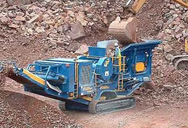
-
PT ANTAM Tbk Bauxite Alumina
Alumina processing in Tayan will produce chemical grade alumina products by processing bauxite ore through the Bayer process into alumina products with a capacity of 300,000 metric tons of Al2O3 (alumina) base per year. The Bayer process consists of three stages, namely Liquor Clarification process, Precipitation Process, and Calcination Process.
Read More
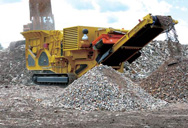
-
Bayer Process Plants Noranda Alumina
2021-5-20 Refining Bauxite to Alumina: Of equal importance is the cost-related need to minimize consumption of bauxite, lime, caustic soda, and flocculant -- the raw materials for alumina production.Meeting this need requires digester conditions capable of extracting 98%+ of the available alumina in the bauxite and clarification systems designed to separate most of the soluble components
Read More

-
A REVIEW OF THE BAUXITE RESIDUE SINTER-LEACH
The Bayer process is the principal industrial means of refining bauxite to alumina. In the Bayer process, alumina is extracted from bauxite into alkaline solution (NaOH) at elevated temperatures. After extraction, the remaining solids (bauxite residue (BR)) are separated, chemically neutralised and
Read More

-
Alcoa to trial new alumina process that uses renewables ...
2021-5-21 “Using lower carbon alumina in the smelting process will reduce the overall carbon footprint of the metal, too, when considering the indirect and direct emissions across bauxite mining, alumina ...
Read More
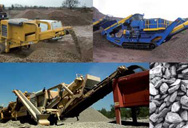
-
OUTOTEC ALUMINA SOLUTIONS
2017-2-13 alumina from bauxite and non-bauxite raw materials. Our integrated refinery concept features state-of-the-art process technology and proprietary equipment and is designed to minimize energy and raw material consumption, as well as overall environmental impact. Our
Read More